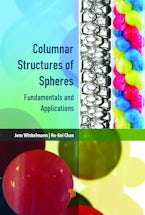Rapid advances in chemical synthesis and fabrication techniques have led to novel nanosize materials that exhibit original and often unforeseen properties. One of the greatest advantages of these nanosystems is that their electronic and optical properties can be controlled not only by the material's inherent features, but also by the sample's size, shape and topology. This flexibility makes them ideal for applications in several fields, ranging from electronics and optoelectronics to biology and medicine. However, in order to design nanoelectronic devices, a clear understanding of their fundamental properties is needed. Semiconductor quantum dots (QDs) and single-walled carbon nanotubes (SWCNTs) are two of the most promising examples of low-dimensional nanomaterials. These two types of nanosystems have been chosen for the extensive studies presented in this book.
The book investigates QDs and SWCNTs using quantum-chemical calculations that describe intricate details of excited-state phenomena and provides information about the mechanisms that occur on the atomic level and that are extremely difficult, if not impossible, to probe experimentally. It delivers, consistently and coherently, a novel approach to nanomaterials which is promising for today's technologies as well as their future. This approach elegantly overcomes computational difficulties known in the field and shares ways to reach top performance in the description of combined quantum effects of molecular vibrations and exciton formation on realistic-size numerical models. The reader will acquire an understanding of the pioneering methodology supported by most recent original results, prospectively applicable to the design of new nano-devices.













